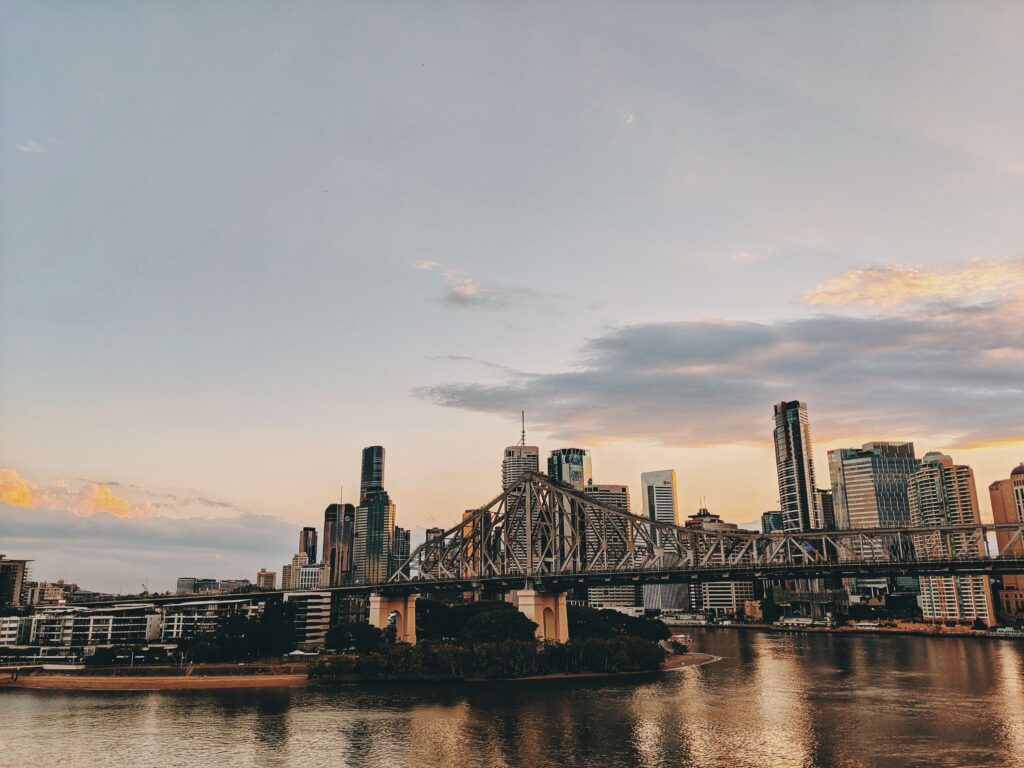The Brisbane Climate

Brisbane lies along Queensland’s tropical coastline and features a humid subtropical climate with hot summers and mild winters.
Windier months typically run from October 12 to March 30, while May is usually the calmest month.
Rainfall levels vary over the course of the year. The wetter season lasts from October 20 to June 28.
Table of Contents
Winter
Brisbane winter, from June to August, offers an idyllic mix of mild temperatures and sunny skies. Additionally, this season brings fresh citrus fruit like oranges, mandarins and grapefruits in abundance.
Brisbane enjoys a subtropical climate with hot and humid summers and mild to cool winters. Rainfall can be quite abundant throughout the year; however, most rainfall occurs between July and September when humidity increases dramatically and thunderstorms become frequent.
Brisbane experiences an average winter temperature of 25 degC, reaching its maximum temperature on July 8 of 30 degC and its minimum on January 2 of 17degC. Sunshine in Brisbane exceeds 2,400 hours annually with May and June being especially sunny, boasting 12+ hours of daylight on average each day; from October through April it becomes slightly cloudier but remains very bright.
Spring
Spring in Brisbane brings gradually rising daily average temperatures and decreasing humidity levels – ideal conditions to explore its parks and nature reserves.
Brisbane in spring experiences an average sunrise at 6:01 AM and sunset is on average 5:34 PM. September 1 marks the shortest day, with 11 hours, 33 minutes of daylight; while November 30 boasts 13 hours 54 minutes.
Rainfall levels across Greater Brisbane in spring are generally close to their long-term average; however, minimum temperatures at several locations have fallen below seasonal norms.
Summer
Brisbane enjoys a subtropical climate that protects it from colder conditions that affect cities farther south in Australia, making winter mild and relatively dry with occasional periods of rainfall. But summer temperatures can become oppressively hot and are frequently affected by tropical cyclones or their remnants which bring flooding or other severe weather events that cause flooding or severe weather events in Brisbane.
Humidity levels remain consistently high throughout the year, ranging from 50% in winter months to 91% during summertime months. When combined with high temperatures, this can lead to mould growth if ventilation systems are inadequately managed in homes that lack proper airflow.
This chart depicts an average temperature over 31 days centered on each day of the year, along with 25th to 75th and 10th to 90th percentile bands and probability of wet days categorized as those experiencing rain alone or with snowfall. Furthermore, this interactive chart allows viewers to click on specific days in order to view hourly average temperature and rainfall details for that specific date.
Autumn
Brisbane’s subtropical climate means autumn doesn’t show its true colours as vibrantly as southern Australia; nonetheless it still transforms the landscape from lush greenery to rich hues of red, orange and ochre. Plus with cooler temperatures and lower humidity it makes this an ideal time for hiking trips or spending a day outdoors!
As autumn continues, parks and vineyards of Granite Belt and Southern Downs become vibrant with russet-red and golden leaves, creating stunning autumn scenes throughout parks and vineyards in this cool-climate region. Only two hours from Brisbane, it makes the ideal place for picnics featuring freshly picked apples from local orchards and locally produced wine from local vineyards.
Moving in autumn in Brisbane can help avoid peak season influxes and price increases. You also have time to organize and declutter, making for a smoother moving process from start to finish – with an orderly home and less items needing packing/moving! A clean home will help make you feel right at home in your new address straightaway.


